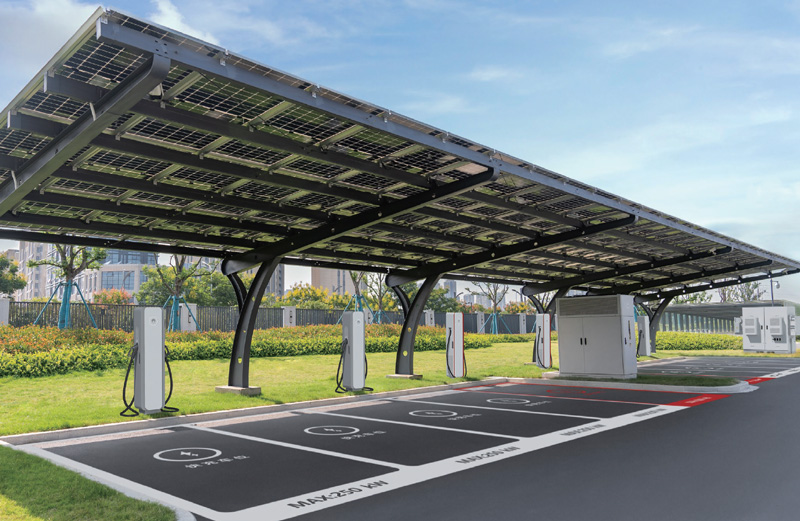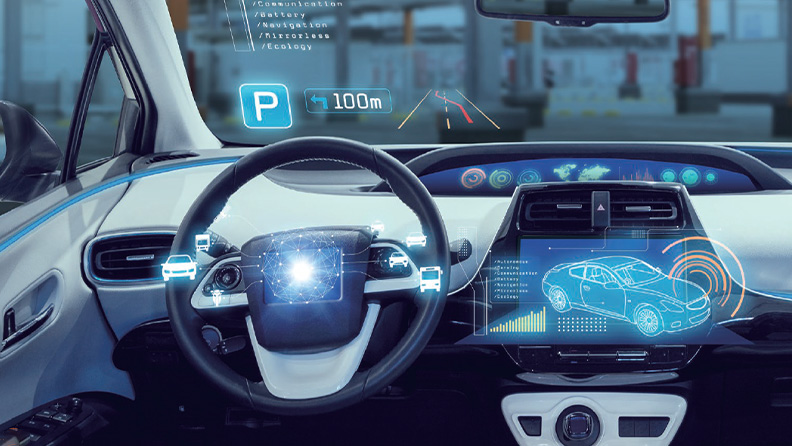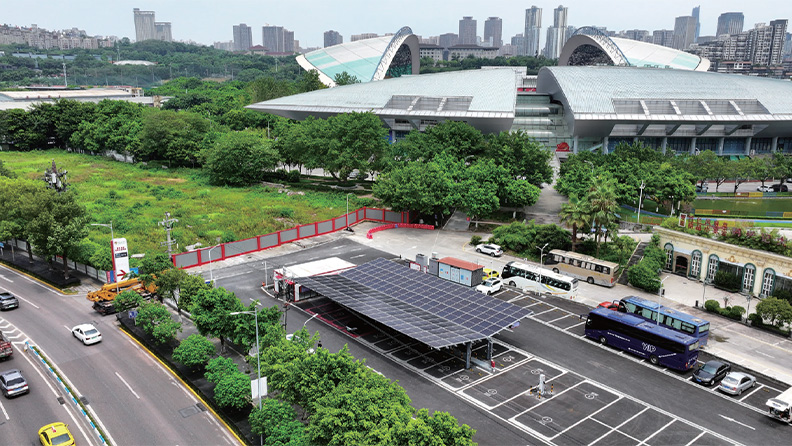Intelligent diagnosis, quick response
Fast and Safe: Why Huawei FusionCharge Solution Is Popular Among Consumers
The surging demand for electric vehicles (EVs) has increased the need for fast and safe charging. Meanwhile, the fast and ultra-fast charging infrastructure is becoming more popular. Major regions in China, such as Shenzhen, Guangzhou, Chongqing, Fuzhou, Beijing, and Hainan, have invested heavily in building ultra-fast charging stations.
How can we choose high-quality and convenient chargers to make EV charging faster and better? Huawei Digital Power, a charging network solution provider, launched a liquid-cooled ultra-fast charging technology that features a cutting-edge safety protection design, achieving fast and ultra-fast charging coupled with ultimate safety.
With the rise of fast and ultra-fast charging, a fast charging speed is critical to reducing the range anxiety.
The entire EV industry is rapidly evolving toward fast and ultra-fast charging. In the past, automakers increased the traction battery capacity to extend the EV range. However, things are not as simple as they look like. This method would impose hundreds of kilograms of mass to EVs, posing significant challenges to the EV architecture, body, and chassis. The huge amount of extra money cost also bothers R&D personnel during the project initiation.
On the flip side, the industry has commercialized the use of third-generation semiconductor technology, namely silicon carbide (SiC), for traction batteries. Leading battery manufacturers have launched fast and ultra-fast charging batteries with a C-rate of 4C, 5C, or higher, able to charge an EV in ten minutes or less. As fast and ultra-fast charging EVs have been put into mature commercial use, EV manufacturers have accelerated to launch 800 V high-voltage EV models without the concern about the size of traction batteries of EVs. In this way, EV owners are free from range anxiety and spend less money in purchasing EVs.
To meet the charging demands of EVs and accelerate the construction of a unified charging network, charging network solution provides, represented by Huawei, are dedicated to developing high-quality charging infrastructure. The maximum power of Huawei's power unit is 720 kW. Huawei's ultra-fast charging dispenser supports a maximum current of 500 A, a maximum voltage of 1000 V, and a maximum output power of 600 kW. Take the XPENG G9 and Li MEGA models that support high-voltage fast charging as examples. These EVs can run 200 km upon 5-minute charge, significantly satisfying EV owners. In addition, Huawei's fast charging dispenser supports a maximum power of 250 kW, which can easily meet the charging requirements of most EVs in the market. Huawei's FusionCharge Solution delivers an excellent experience, making it an exceptional choice for EV owners.
The solution also provides an optimal user experience during charging and adopts intelligent algorithms to push the latest features in the charging protocol to users. During a charging session, chargers are highly compatible on the premise that the safety requirements of the GB standards are met, therefore achieving the first-attempt success rate up to 99%. Moreover, an EV-charger compatibility test database is established for different EV models, continuously fed to big data deep learning. This solution is applicable to diverse EV models in the market, even including trucks and high-voltage cars. In addition, the charging noise is lower than 55 dB, creating a tranquil environment for EV owners to take a rest while charging their EVs and for residents who live near the charging station.
Huawei's FusionCharge Solution ensures the safety of people, EVs, and chargers.
With the rapid rise of EVs, safety accidents occasionally occurred, which threatened the safety of drivers and passengers as well as assets. To achieve fast and ultra-fast charging, one must increase the charging power by adding charging voltage and current. This leads to a sharp change in the battery temperature and voltage, potentially resulting in the thermal runaway of batteries. Besides technical challenges, regular charging facilities don't have the proper layout to ensure safety, devices often short-circuit, and aged or damaged insulation components in electrical circuits or short circuits in chargers may cause a fire.
To address these concerns, China has gradually strengthened supervision and imposed higher standards on EV charging safety. According to the "Code of practice for new energy vehicles safety operation inspection" released in August 2024, the traction battery safety charging inspection (only for models equipped with DC fast charging) and electrical safety inspection will become mandatory during annual vehicle examinations in 2025.

Till now, Huawei Digital Power has worked with customers and partners to build more than 50,000 fast or ultra-fast chargers nationwide, covering more than 200 cities in 31 provinces across China. In addition to superior experiences for customers, the key to the success also lies in the super long service life of more than 10 years and comprehensive safety protection provided by Huawei’s FusionCharge Solution. The solution features intelligent algorithms, precise current control, insulation design, protection mechanisms, and safety control policies. As a result, it ensures the safety of people, EVs, and chargers, bringing an ultra-fast and safe charging experience to EV owners.
Thanks to the strict requirements on the quality standards, Huawei's FusionCharge Solution enhances the safety level of the chargers at the initial stage of design and production. A single component adopts the enhanced insulation design and can withstand a voltage of 4000 V DC. The maximum safety distance of the core parts is 10 mm, doubling that of the traditional solution. In addition, the liquid cooling module, a core component of the solution, is die-casted using a 3000-ton hydraulic press, and is not directly in contact with the external environment. This prevents sandstorm and condensation erosion, and ensures efficient heat dissipation and long-term stable operation. To prevent incidents of extremely low probability, Huawei's FusionCharge Solution equips its innovative ceramic DC contactors with capabilities that far outperform traditional solutions in terms of large current tolerance, high-temperature resistance, mechanical service life, and insulation. The contactors can easily cut off high currents and extinguish high-voltage arcs if an exception occurs. Huawei's ceramic DC contactors have a service life of 500,000 cycles — five-fold that of the industry average. They also feature four or five times better high-temperature resistance compared with regular contactors in the industry. Additionally, they have stronger explosion-proof and arc-extinguishing capabilities, significantly reducing the risks of electric leakage, electric shocks, and explosions.
The shell of the charging cable that may come in contact with the human body is made from high-strength, high-elasticity materials with a high comparative tracking index (CTI), which meets China's testing standards. The insulation coefficient is further improved through physical protection. Huawei's FusionCharge Solution can also quickly respond to exceptions and reduce safety risks. For example, if the residual current becomes greater than the threshold of 30 mA, the residual current device (RCD) will cut off the current within milliseconds to prevent electric leakage and shocks. A co-processor is deployed in addition to the main one. Using a plant-level transmission protocol, a dedicated fast channel responds quickly to safety issues during emergencies, protecting EV owners.
Throughout a charging session, Huawei's FusionCharge Solution leverages intelligent algorithms to accurately control the current and quickly and constantly track changes in the energy demand of EV batteries, ensuring the right charging current, a longer battery lifespan, and high safety. When the charging session starts, the battery is at a low battery state of charge (SOC) and is hungry for energy. The liquid-cooled ultra-fast charging solution can quickly and accurately boost the battery while preventing overcharging. Midway through, the energy demand tends to be stable. The solution can control the ripple of the charging current to about 0.5%. Toward the end of the charging session, the battery is about to be fully charged, requiring real-time and accurate current control. The solution can adjust the charging current within milliseconds.
To reduce range anxiety and provide a better charging experience for EV owners, Huawei's FusionCharge Solution greatly improves charging efficiency and convenience, making the iterative EV charging more assuring. The comprehensive safety protection design sets Huawei's FusionCharge Solution apart from the competition in terms of both charging speed and safety. In the future, Huawei Digital Power will continue to support the construction of fast and ultra-fast charging facilities, building smart charging networks that satisfy user and power grid demands. Huawei Digital Power will continue to deliver efficient services across various charging scenarios, including intra-city, inter-city, fleet, and campus charging stations. Its mission is to help more EV owners travel safely with constant power and jointly charge the road ahead.




